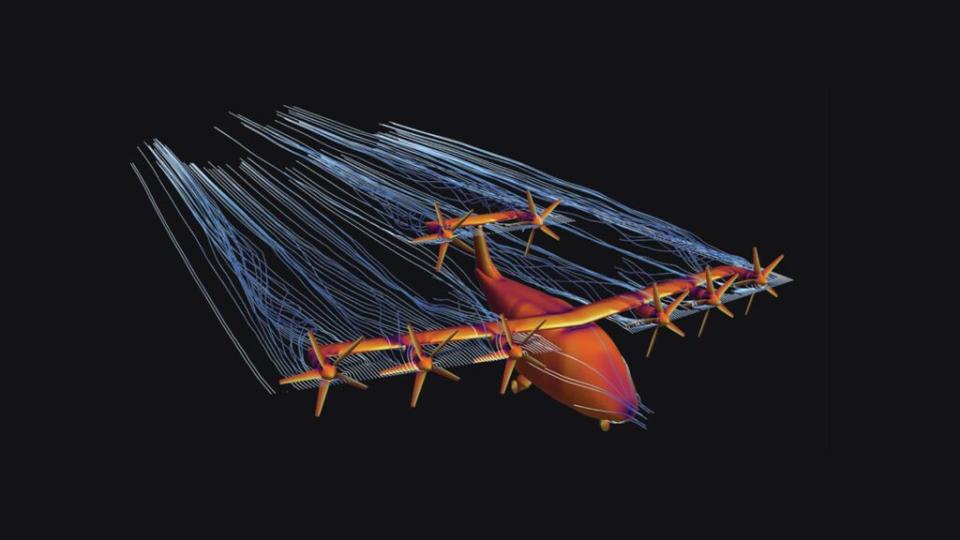Luminary Cloud's simulator taps GPUs to help speed up product design
Simulations are an essential step in physical product engineering. They enable engineers to create prototypes and understand how they might perform in the real world, accounting for factors like aerodynamic drag, air and water flows, and pressure and temperature distributions.
But today’s engineering simulators tend to be quite slow and difficult to scale up, according to Jason Lango, the CEO of Luminary Cloud.
"Most engineers use legacy software that runs on on-premises infrastructure, resulting in a slow design workflow where each simulation takes days or weeks," Lango told TechCrunch in an interview. "This decades-old legacy software hasn't modernized to run on the cloud and GPUs."
Luminary, a startup building a platform to run engineering simulations, by contrast does rely on the cloud and GPUs, Lango says -- specifically clusters of Nvidia GPUs. Luminary's simulation tooling, which is being used by customers such as Puma golf brand Cobra Golf and Joby Aviation, the air taxi startup, lets engineers test engineering scenarios to optimize their product designs ostensibly faster than legacy software solutions.
"Luminary’s real-time engineering approach empowers engineering teams to perform product simulation and analysis cycles in minutes, rather than weeks," Lango said. "[This] results in improved time to market, faster insights, better design outcomes, increased team productivity and better use of valuable physical prototyping dollars."
AI-leaning
Luminary isn't exactly first-to-market with a cloud-based engineering simulation tool. Rivals include Siemens, Dassault Systèmes, PhysicsX, SimScale, Flexcompute and Ansys, which Synopsys recently acquired for $35 billion.
But one aspect that sets Luminary apart is its investment in AI, Lango says.
The platform offers an AI assistant, Lumi AI, that automatically handles tasks like mesh generation. Mesh generation -- which divides an object or scene into small, discrete cells or elements called meshes -- is a key component of the simulation process, explains Lango.

Image Credits: Luminary Cloud
"Luminary is a simulation and analysis company, but we'll eventually become a data company," he continued. "With AI and machine learning capabilities, [our] platform could not only provide suggestions for how and where to make modifications to improve and optimize designs, but additionally learn how to set up, solve and visualize simulations better, allowing even novice users to extract significant insights."
In another potential differentiator, Luminary doesn't charge for a license or subscription fee -- unlike some of its rivals. Instead, customers pay for simulation and analysis in dollars per minute of GPU usage.
"For example, a quick conceptual design simulation of an aircraft could run for a couple of minutes and cost less than $90," Lango explains. "Customers doing larger, high-fidelity simulations, or large numbers of simulations exploring different design alternatives, would achieve volume for prepaid capacity discounts."
Origin and expansion
Lango founded Luminary in 2019 with Juan Alonso, a Stanford aeronautics and astronautics professor. Prior to Luminary, Lango worked at Silicon Graphics, the high-performance computer chip manufacturer, as well as NetApp and Cisco, while Alonso ran NASA’s Fundamental Aeronautics Program, leading research in supersonic projects.
Lango met Alonso during summer 2019 through Sutter Hill Ventures, the private equity firm, where Lango was an entrepreneur in residence. Sutter Hill managing director Doug Mohr invited Alonso -- at the time, one of his squash partners -- to meet Lango at the firm's offices in Palo Alto, suspecting that Alonso and Lango would make strong business partners.
Lango and Alonso clicked. And, over the course of several meetings, they refined the idea for the platform that became Luminary.
Sutter Hill sees a lucrative future in Luminary, evidently, as the startup's customer base eclipses 33 organizations across the automotive, aerospace and defense and industrial equipment sectors.
Today, Luminary announced that it raised $15 million in equity and $100 million in debt from Sutter Hill, a tranche the company plans to put toward expanding its sales org and product capabilities.
"Jason and Juan are bringing the power of GPUs and the elasticity of the cloud to one of the most complex engineering functions," Mike Speiser, managing director at Sutter Hill, said in an emailed statement. "Luminary Cloud has the potential to [overhaul] the expensive and arduous process of product development."
Luminary, based in San Francisco, has a team of 73 staffers and aims to grow that number to 80 by the end of the year.
"Luminary's on-demand and prepaid capacity consumption model is a great way to have a win-win with forecast volume and discounting," Lango said. "Customers of any size can start with a $0 up-front on-demand relationship ... [As a result], generally, our sales haven't been impacted by the slowdown in tech, also due to our customer base being industrial R&D and engineering companies continuing to invest in their own commercial or consumer product development."

 Yahoo Lifestyle
Yahoo Lifestyle 
